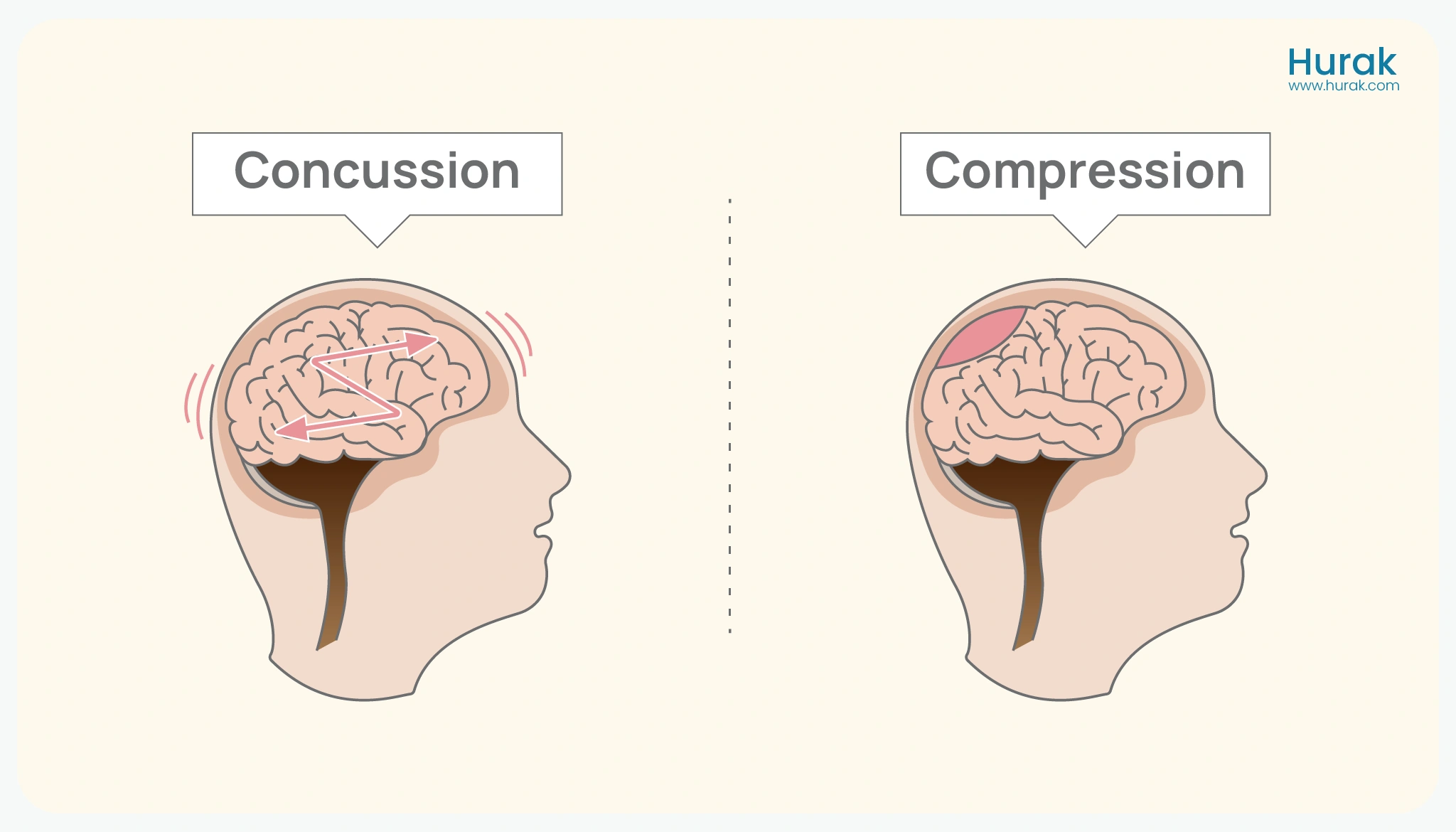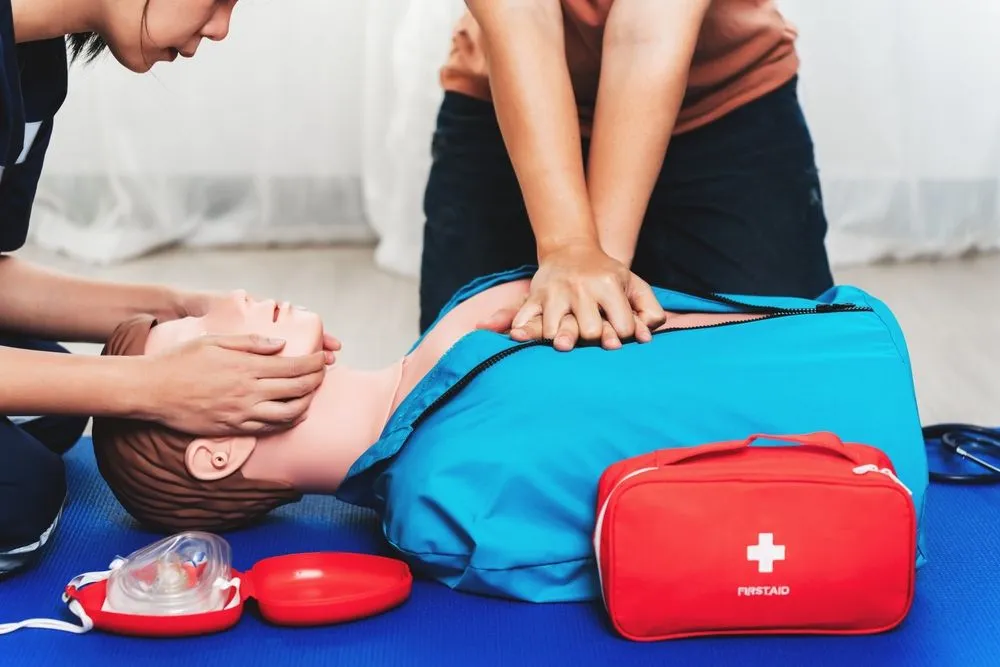
Whether minor or significant, injuries to the head should be well attended to and responded to in order to avoid escalating to a worse situation. It is also an easily injured area, and even what may look like minor injuries can so easily turn into major complications. In this writing, we will not only learn about casualty handling and treatment of our casualty with mild head swelling but also discuss more about serious injury, concussion first aid, and signals to look for when one may need the attention of a professional.
How Would You Respond to a Person with a Minor Head Injury That Has Caused Visible Swelling?
If someone has a minor head injury and they have signs of swelling, the same principles should be followed but with a little less severity. Here are the steps to follow:
- Assess the person: Make sure there is no sign of a more serious affliction. If the person is conscious and awake, go to the next steps. If they are unconscious, then get acquainted with emergency management procedures for unconscious individuals.
- Apply Ice or Cold Compress: If there is redness and/or puffiness, use an ice pack or cold towel on the affected area but ensure it is covered with a cloth. This minimizes the aching as clients are also tapered to prevent their skin from inflammation. Also, do not apply ice directly to the skin surface, as this will lead to frostbite.
- Monitor for Changes: Even if concerns are as simple as bruises, watch the person for any changes in behavior or mental state. In the event that the swelling increases, or the person starts developing complications of severe head injury, call for help.
- Seek Medical Attention if Necessary: Minor redness and grains are fine, but if the accident resulted in major trauma, or if the symptoms become worse, seek medical attention.

Compression Head Injury: Understanding the Risks
This particular kind of head injury usually happens whenever the force exerted on the brain is so strong that injury is inevitable. This can occur in road accidents, falls, or any other rigorous sports (close contact sports). Compression injuries may potentially result in severe fractures of the skull, besides leading to swelling of the brain or bleeding.
First Aid: Compression Head Injury
- Call Emergency Services Immediately
Compression injuries are life-threatening and require urgent medical attention. - Ensure the Person Remains Still
Avoid moving the person unless necessary for their immediate safety. - Monitor for Severe Symptoms
Watch for signs like:
Worsening headache.
Drowsiness or confusion.
Vomiting or seizures.
Weakness or paralysis in limbs.
Unequal pupils or fluid (blood/clear) leaking from ears or nose. - Keep the Head Elevated
Slightly elevate the head (if possible) to reduce intracranial pressure. - Do Not Offer Food, Drinks, or Medication
Avoid giving anything by mouth, as surgery may be required. - Prevent Further Harm
Keep the area safe to prevent additional injuries.
Signs of Serious Head Injury
Knowing the signs of a serious head injury is essential in providing timely and appropriate first aid. This type of injury can quickly escalate to a life-threatening condition if not properly managed. Key signs of a serious injury to the head include:
- Loss of Consciousness: A casualty who is unconscious for more than a few seconds needs immediate medical attention.
- Severe Headache: A headache that worsens or is severe may indicate internal bleeding or swelling.
- Bleeding or Clear Fluid from the Nose or Ears: This could be a sign of a skull fracture and needs urgent care.
- Confusion, Dizziness, or Disorientation: If the person is confused or disoriented, this may be a sign of a concussion or more serious injury.
- Seizures: Seizures can indicate brain injury, and emergency services should be contacted right away.

Take Action Now: Learn How to Save Lives with First Aid Training!
Head injuries can happen anytime, and knowing how to respond quickly and effectively can make all the difference. Our First Aid courses offer complete training to help you handle critical situations. Whether you want to improve your skills or workplace safety, these courses help build confidence and expertise. View our Emergency First Aid at Work (EFAW) and Level 3 First Aid at Work courses. These courses meet the UK legal requirements and help you keep people safe.
Recognizing the Signs and Symptoms of Concussion
A concussion is a mild injury to the brain resulting from being hit on the head. Concussions are very frequent, but they should never be considered as minor injuries. The signs and symptoms of a concussion include:
- Headache: Headache is perhaps one of the most typical symptoms of concussion and can either increase constantly for the first week after the injury or have its onset after this time.
- Dizziness and Nausea: Any incidence of dizziness, nausea, or vomiting after a head injury points towards a concussion.
- Confusion: The casualty may have amnesia of the incident, and they may be confused and not recognize the environment.
- Balance Issues: Stiffness, imbalance, or a tendency to fall, or difficulty in moving from place to place could also be present.
Concussion First Aid
- Ensure the Person Remains Still: Keep the casualty in a safe position and limit their movement.
- Avoid Further Impact: Prevent any further impact to the head, which could worsen the injury.
- Seek Medical Help: Even if the symptoms seem mild, it’s crucial to have a healthcare professional evaluate the injury to prevent complications.
Pre Hospital Management: What You Need to Know about concussions
Pre-hospital management of concussion is a very delicate area that requires great precautions and quick actions. After a head injury, if the person displays signs of concussion, take the following actions:
- Keep Them Calm: Try to make the person relax and do not encourage any tiring activities.
- Monitor Their Condition: Always look out for signs of the condition getting worse, such as confusion, a severe headache, or loss of consciousness.
- Do Not Allow Them to Sleep Immediately: The casualty should, in the first instance, remain awake so that there are good prospects for observing alterations in the situation.
- Transport to Medical Facility: If these symptoms start to worsen, or do not fade away after some time, then they need to get professional help at once. Sometimes concussions do cause headaches and dizziness, and it is necessary to have bed rest if one has a concussion. However, if one has a concussion, they are at risk of developing dangerous complications.
First Aid for Head Bumps: Quick Steps to Take
Head bumps are frequently observed, but they should not be overlooked. They can produce such effects as swelling, weeping, or sometimes even a concussion. Here’s how to handle them:
- Ice the Bump: On the rare occasions that it is painful, you should put a cold compress or ice pack to minimize swelling.
- Check for Other Symptoms: During the assessment for a head or neck injury, look for symptoms of confusion, dizziness, or nausea. If any of these occur, please see a doctor right away.
- Encourage Rest: The casualty should not engage in any physical activity until they are ready to get up again.
- Watch for Delayed Symptoms: You should therefore observe any changes that may occur several hours after the bump, which may be symptoms of a serious head injury.
Conclusion
All head injuries, no matter how small, should be looked into and treated. From raised lumps to puffed-up parts to indications of a broken head, it’s vital to move fast and effectively when someone is harmed. By identifying severe head injuries, using the right procedure, and getting the right medical help whenever required, one is safe from the dangers involved, and the individual injured will recover in the shortest time possible. Remember: Knowledge of how to handle a concussion or head bump first aid is crucial, as complications may arise at any time. It is always best to be safe than sorry. If you think you are in extreme pain or if the wound is major, consult a doctor immediately.




